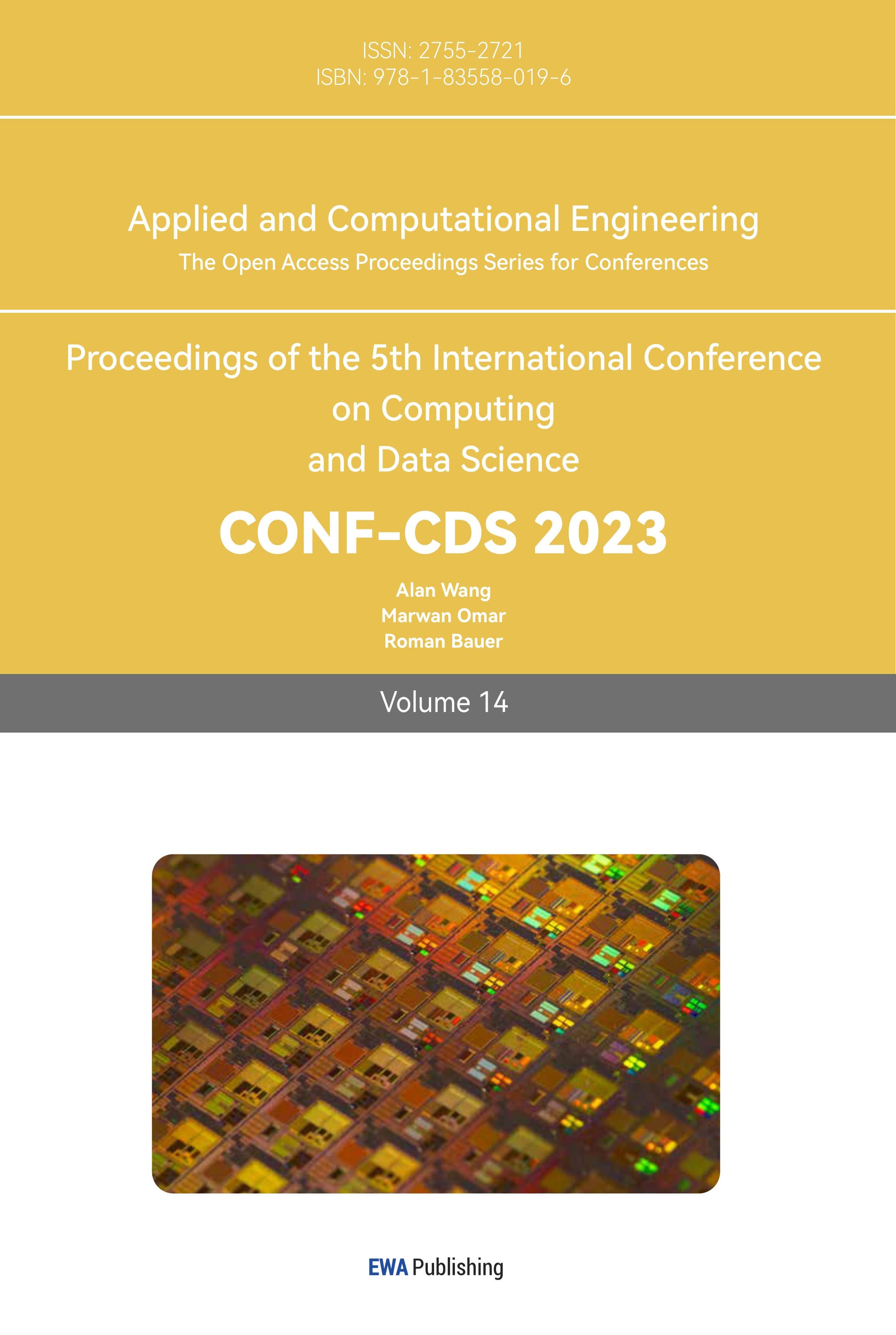References
[1]. Yang Li, Wu Yuqian, Wang Junli, et al. Review of research on cyclic neural networks [J]. Journal of Computer Applications,2018,38(S2):1-6+26
[2]. Huang Lei Du Changshun. Text classification based on recursive neural network study [J]. Journal of Beijing chemical university (natural science edition), 2017, 44 (01) : 98-104. The DOI: 10.13543 / j.b HXBZR. 2017.01.017.
[3]. Lu Hongtao, Zhang Qinchuan. A review of the application of deep convolutional neural networks in computer vision [J]. Data Acquisition and Processing,2016,31(01):1-17.DOI:10.16337/ J.1004-9037.2016.01.001.
[4]. Li Dan, SHEN Xia-jiong, ZHANG Hai-xiang, et al. Convolution neural network algorithm based on Lenet - 5 [J]. Journal of computer age, 2016, No. 290 (8) : 4-6 + 12. DOI: 10.16644 / j.carol carroll nki cn33-1094 / tp. 2016.08.002.
[5]. Wang Jiong. Research on Deep Neural network model compression method based on Structured pruning [D]. Nanjing university of posts and telecommunications, 2022. DOI: 10.27251 /, dc nki. GNJDC. 2022.001412.
[6]. Zhou Xiangyu, Gao Zhonghe, Zhao Luteyao, et al. Text region detection Algorithm based on Pruning Optimization [J]. Computer and Digital Engineering,2022,50(09):2059-2064.
[7]. Li Tianjian, Huang Bin, Liu Jiangyu et al. Convolution neural network object detection algorithm in the application of logistics warehouse [J]. Computer engineering, 2018, 44 (6) : 176-181. The DOI: 10.19678 / j.i SSN. 1000-3428.0047321.
[8]. Song Yu, Sun Wen Yun. Edge Preserving image smoothing Algorithm Based on Reweighted l1 norm [J]. Journal of South China University of Technology (Natural Science Edition), 201,49(06):109-121.
[9]. Pan Jinjie, Lin Dajun, Luan Haitao. A broadband light source of phase reconstruction method based on neural network [J]. Applied laser, and 2022 (6) : 137-143. The DOI: 10.14128 / j.carol carroll nki. Al. 20224206.137.
[10]. Du Xiaohao. Training and Structure optimization method for Convolutional Neural networks and its application [D]. Lanzhou university, 2022. DOI: 10.27204 /, dc nki. Glzhu. 2022.003431.
Cite this article
Zhong,J. (2023). Research on optimization technology based on mobile terminals convolutional neural networks. Applied and Computational Engineering,14,68-73.
Data availability
The datasets used and/or analyzed during the current study will be available from the authors upon reasonable request.
Disclaimer/Publisher's Note
The statements, opinions and data contained in all publications are solely those of the individual author(s) and contributor(s) and not of EWA Publishing and/or the editor(s). EWA Publishing and/or the editor(s) disclaim responsibility for any injury to people or property resulting from any ideas, methods, instructions or products referred to in the content.
About volume
Volume title: Proceedings of the 5th International Conference on Computing and Data Science
© 2024 by the author(s). Licensee EWA Publishing, Oxford, UK. This article is an open access article distributed under the terms and
conditions of the Creative Commons Attribution (CC BY) license. Authors who
publish this series agree to the following terms:
1. Authors retain copyright and grant the series right of first publication with the work simultaneously licensed under a Creative Commons
Attribution License that allows others to share the work with an acknowledgment of the work's authorship and initial publication in this
series.
2. Authors are able to enter into separate, additional contractual arrangements for the non-exclusive distribution of the series's published
version of the work (e.g., post it to an institutional repository or publish it in a book), with an acknowledgment of its initial
publication in this series.
3. Authors are permitted and encouraged to post their work online (e.g., in institutional repositories or on their website) prior to and
during the submission process, as it can lead to productive exchanges, as well as earlier and greater citation of published work (See
Open access policy for details).
References
[1]. Yang Li, Wu Yuqian, Wang Junli, et al. Review of research on cyclic neural networks [J]. Journal of Computer Applications,2018,38(S2):1-6+26
[2]. Huang Lei Du Changshun. Text classification based on recursive neural network study [J]. Journal of Beijing chemical university (natural science edition), 2017, 44 (01) : 98-104. The DOI: 10.13543 / j.b HXBZR. 2017.01.017.
[3]. Lu Hongtao, Zhang Qinchuan. A review of the application of deep convolutional neural networks in computer vision [J]. Data Acquisition and Processing,2016,31(01):1-17.DOI:10.16337/ J.1004-9037.2016.01.001.
[4]. Li Dan, SHEN Xia-jiong, ZHANG Hai-xiang, et al. Convolution neural network algorithm based on Lenet - 5 [J]. Journal of computer age, 2016, No. 290 (8) : 4-6 + 12. DOI: 10.16644 / j.carol carroll nki cn33-1094 / tp. 2016.08.002.
[5]. Wang Jiong. Research on Deep Neural network model compression method based on Structured pruning [D]. Nanjing university of posts and telecommunications, 2022. DOI: 10.27251 /, dc nki. GNJDC. 2022.001412.
[6]. Zhou Xiangyu, Gao Zhonghe, Zhao Luteyao, et al. Text region detection Algorithm based on Pruning Optimization [J]. Computer and Digital Engineering,2022,50(09):2059-2064.
[7]. Li Tianjian, Huang Bin, Liu Jiangyu et al. Convolution neural network object detection algorithm in the application of logistics warehouse [J]. Computer engineering, 2018, 44 (6) : 176-181. The DOI: 10.19678 / j.i SSN. 1000-3428.0047321.
[8]. Song Yu, Sun Wen Yun. Edge Preserving image smoothing Algorithm Based on Reweighted l1 norm [J]. Journal of South China University of Technology (Natural Science Edition), 201,49(06):109-121.
[9]. Pan Jinjie, Lin Dajun, Luan Haitao. A broadband light source of phase reconstruction method based on neural network [J]. Applied laser, and 2022 (6) : 137-143. The DOI: 10.14128 / j.carol carroll nki. Al. 20224206.137.
[10]. Du Xiaohao. Training and Structure optimization method for Convolutional Neural networks and its application [D]. Lanzhou university, 2022. DOI: 10.27204 /, dc nki. Glzhu. 2022.003431.









